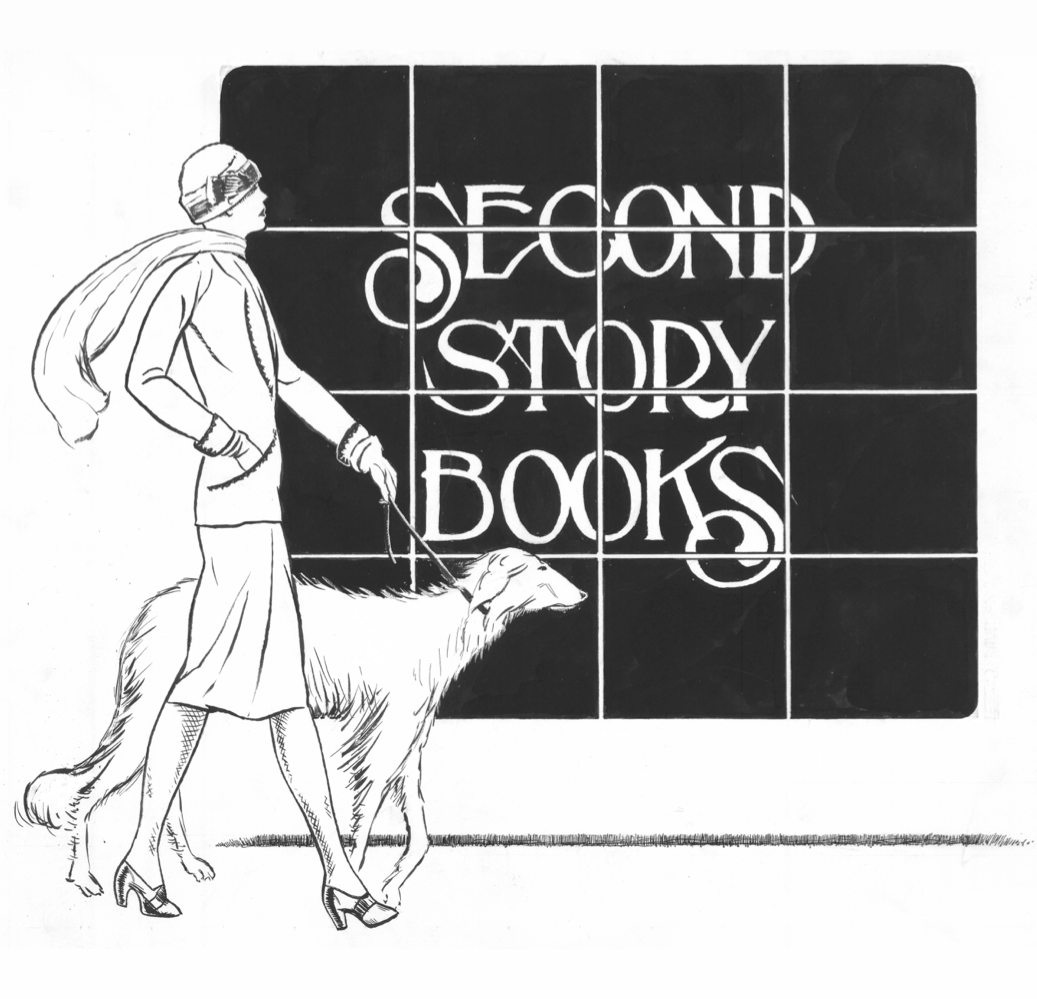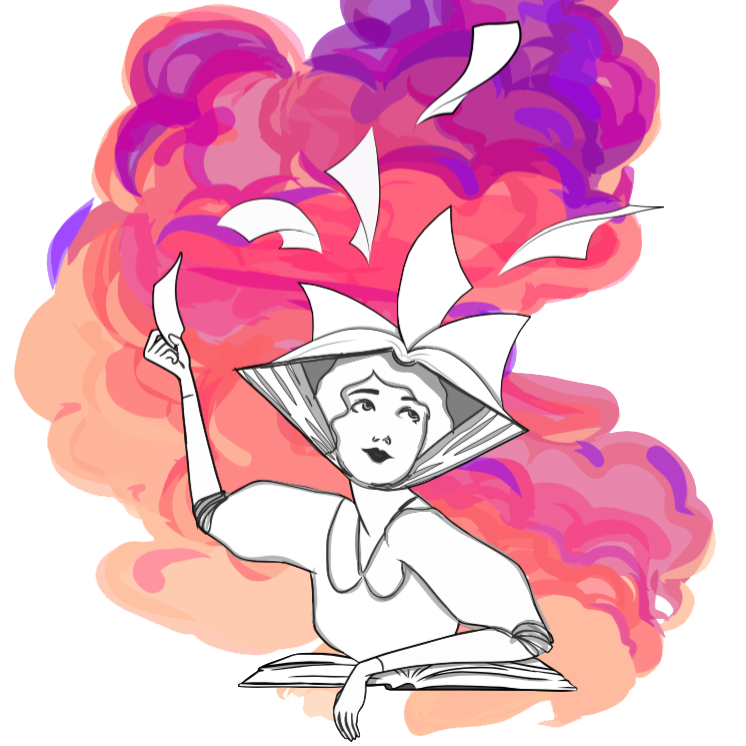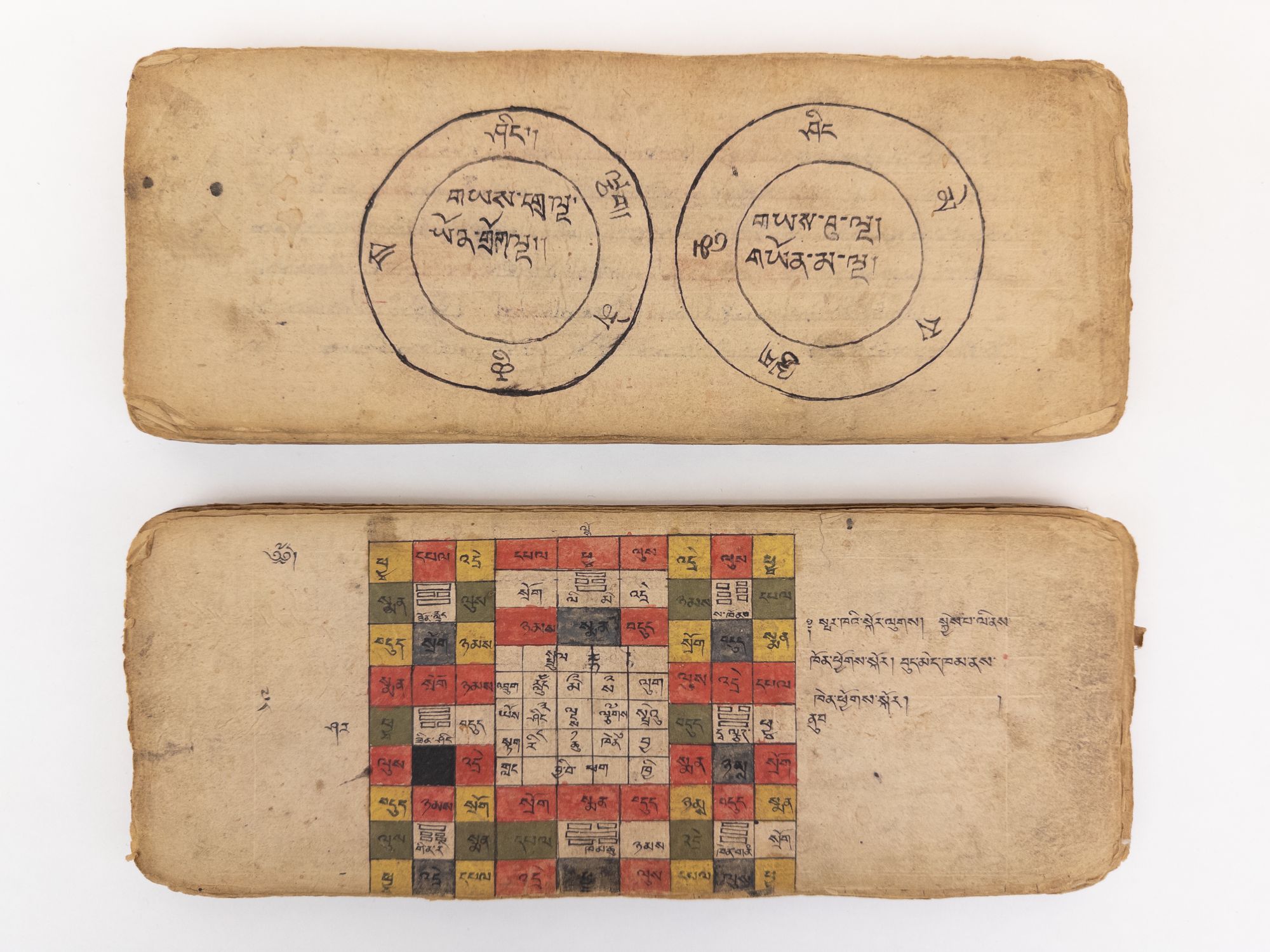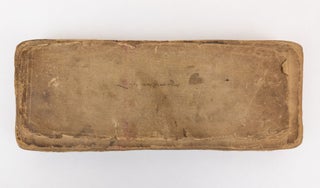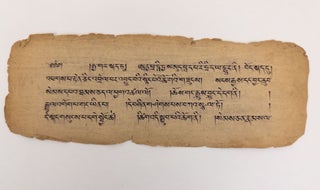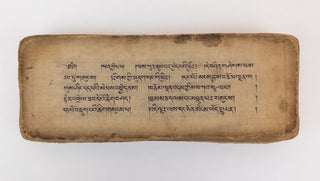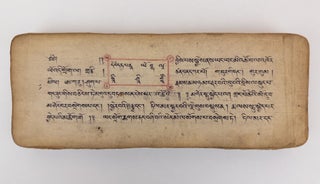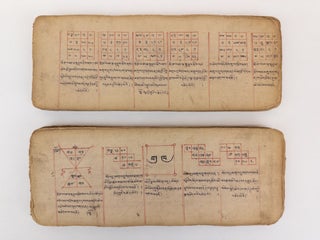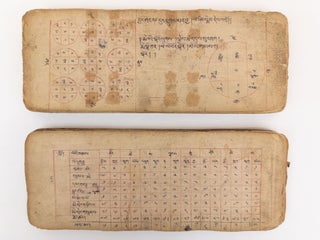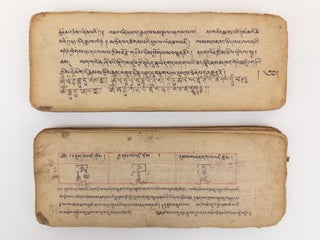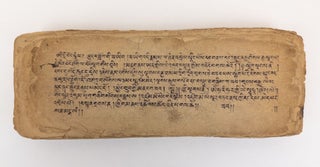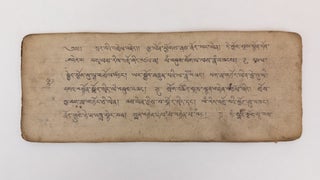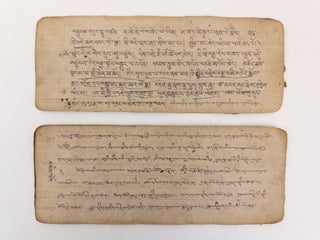COLLECTION OF TIBETAN RITUAL AND DIVINATION TEXTS FOR PROTECTION, HEALING, AND OTHER POWERS
Late 19th-early 20th c. A manuscript compilation of Tibetan ritual texts assembled in the late 19th or early 20th century. In Good minus condition. Title leaf much worn and soiled, with a number of small closed tears and stains. All subsequent leaves show lesser, but similar wear. All leaves with moderate plus age toning. w 10.25 in x h 4 in. 83 leaves. SH Consignment.
1366857
Special Collections
Price: $2,500
NOTES
This manuscript consists of two basic components: a first part hand-written in a standard U-chan script in calligraphic style, and a second part written in another hand in a thinner style, with a final few pages in khyug yig (fast script).
There is no colophon that gives a date for this compilation, and there are no comparable versions, because this is a rather unique collection of texts, probably for personal use. Therefore it is not possible to give an exact date. The fact that it is not a standard compilation might explain why it is handwritten and not printed; also the diagrams and “edible letters” are probably better (or perhaps more easily) written than carved into a woodblock. The age and wear of the paper, however, are consistent with an origin in the late 19th or early 20th century.
Part 1 is an eclectic assemblage of texts bringing together works from the conventional Buddhist canon, the Tibetan Treasure (terma) tradition, as well as the astrological and divination traditions of Tibet. It would make sense that all of these kinds of works—whether employing mantras and dharanis, literally consuming efficacious letters and symbols, or creating divination charts—could be used for rituals of protection, healing, and other forms of increase or subjugation.
The first work in this collection (folios 1b-8a (folio at the bottom of photo 1025)) is the Arya Pratityasamutpada-parihridaya-dharani (‘Phags pa rten cing ‘brel bar ‘byung ba’I snying po’I cho ga’I zungs), which means The Dharani for the Ceremony of the Essence of the Noble Dependent Origination. This is a part of the Kagyur, or “Word of the Buddha”—that is, the portion of the Tibetan Buddhist canon containing the teachings of the Buddha in the sutras.
The second work is not as easy to define, but it begins on folio 8a (there is a long gap on the final line and then a sentence begins (bottom, photo 1125) and it ends on folio 40b (top, photo 1058). No title is given at the beginning, but this work apparently centers on rituals employing so-called “edible letters (za yig).” In these rituals, participants would literally eat these clusters of letters and symbols for purposes of healing, protection, merit, etc. On the bottom of folio 32b and the top of folio 33a (two pages in photo 1050) reference is made to a za yig text by the famous, 14th-century treasure-revealer (terton) in the Nyingma tradition of Tibetan Buddhism, Dorje Lingpa. The text named is The Oral Instructions for the Jeweled Treasury of Edible Letters (Za yig nor bu’i bang mdzod zhal shes). The final line of the final folio of this ostensible work, however, attributes the discovery of this or some element of this text to another terton, Orgyen Sangye Lingpa. This may be a reference to either Orgyen Lingpa or Sangye Lingpa, but is likely the former.
The last part of the text is centered on trigrams (spar kha), which are used in Tibetan astrological and divination practices. There are instructions on how to make and, it seems, how to interpret them. Gaps in the pagination suggest that there are missing sections, but this portion appears to be arranged in three parts:
folios 57a – 63b;
folios 75a – 90a; and
folios 90b – 113b.
Part 2 describes itself as a commentary or detailed explanation (’grel bshed) of trigrams. It has notes, marginalia, corrections, and even a one-page/two-folio addendum written in the fast, quick hand script. This appears to be a supplementary text to Part 1, but no indication of date or authorship is given. Clearly a different hand has composed it.
John C. Huntington, a professor of art history specializing in Tibetan Buddhist art, acquired these texts as a part of his personal study collection. In addition to relying on the collection for his own research and publications, he also incorporated it into his seminar courses and other teaching and mentoring during his long career at the Ohio State University.
